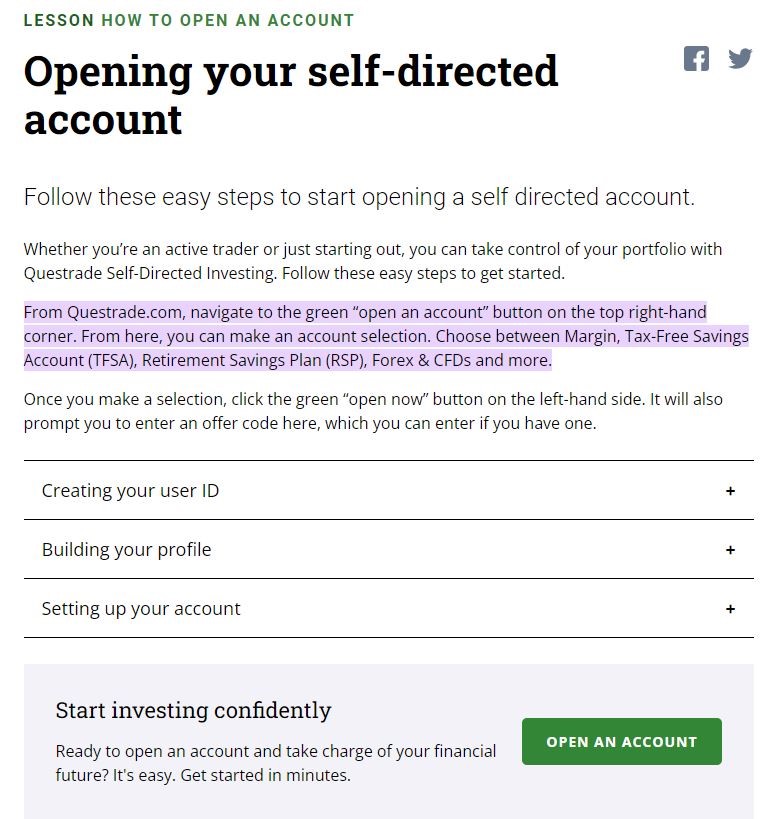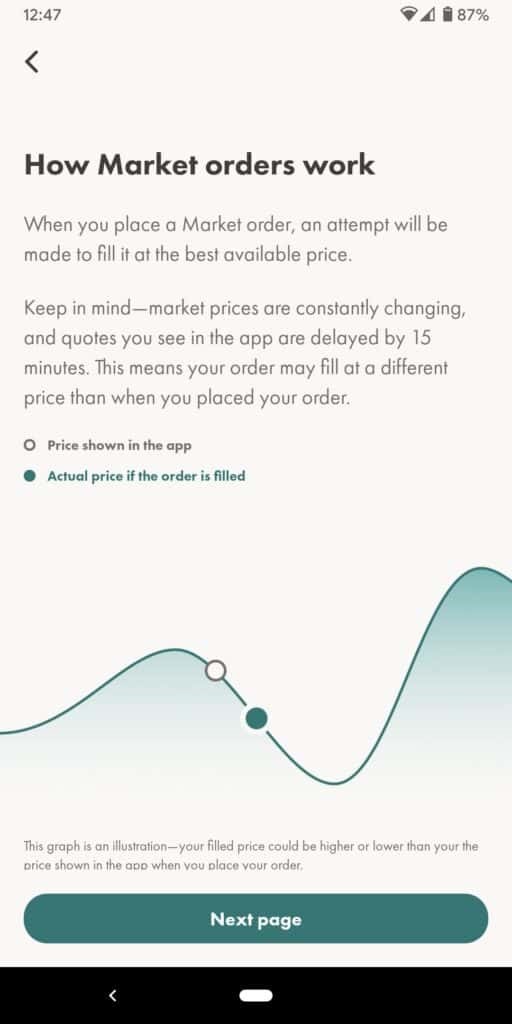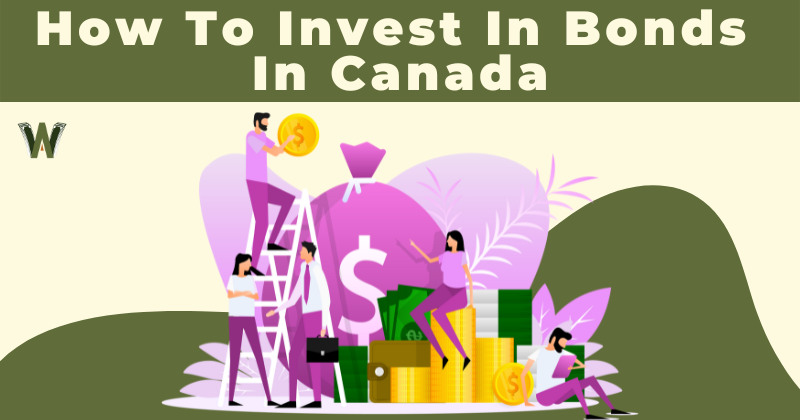If you are considering potentially investing in bonds in Canada, you will soon discover that bonds can be quite more complex to understand than the average stock.
Bonds are a critical component of most portfolios because they improve diversification and can increase yield.
Despite bonds performing terribly throughout 2022, nearly everyone thinks that bonds will rally in 2023.
If you are looking for how to invest in bonds in Canada, here are 3 steps to follow:
- Choose the way you will be investing in bonds
- Set up an account at a brokerage
- Place the order to purchase the bond
I will go over how to invest in bonds below and cover each step involved with purchasing a bond in more depth.
When Should you Invest in Bonds?
Investing in bonds is like lending money to a company or government. They will pay you back the money you lend them and also give you interest payments for using your money.
Bonds are generally less risky than stocks and can be a good way to make a steady income. They can also be used to balance out riskier investments in a portfolio.
However, it’s important to know that there are some risks involved with bonds, such as changes in interest rates or the possibility that the company or government might not be able to pay you back.
Investors that may favour investing in bonds are likely:
- Looking for a constant income
- Typically trying to invest in low-risk assets
- Do not require very high rates of return
Bonds will likely be inappropriate investments if you:
- Do not care or do not require constant income
- Are looking for explosive growth
- Have no problem stomaching volatility
- Are looking for a more tax-efficient investment return
Before investing in bonds, it’s important to think about how much risk you’re comfortable with and what you want to achieve with your money.
How to Invest in Bonds in Canada

Before buying or investing in bonds, make sure that you have decided that bonds are a good fit for your particular financial circumstances.
Step 1: Choosing the Way that you will be Investing in Bonds
There are three main ways to buy bonds if you are looking to invest in them. These include:
- Buying a bond on the primary market as it is issued by the issuer
- Buying a bond on the secondary market (after it has been issued) from another bondholder
- Investing in bonds through a pooled investment like an exchange-traded fund or mutual fund
I strongly recommend choosing either option two or three since purchasing bonds as they are issued is extremely difficult for the average investor and typically requires a much higher minimum investment. For these reasons, I will outline the second and third options below.
Buying a bond on the secondary market is usually done directly through a brokerage, meaning you must have an account with a broker that supports fixed-income trading. Fixed-income orders can be executed directly through a broker’s online platform or over the phone.
If you are looking to buy bonds directly, your broker will usually have specific information about bonds that are available to purchase.
Bonds can also be bought through exchange-traded funds (ETFs) or mutual funds. This is the easiest way to add bonds to your portfolio and also allows you to be much better diversified in most cases than by buying bonds separately.
When you purchase a bond fund, you will usually be paying fees for managing the fund. These management fees are typically on the low end (especially for ETFs).
You will need to decide on either buying bonds directly or purchasing bonds through an ETF or mutual fund before continuing on to the next step.
Step 2: Setting up an Account with a Brokerage
You will want to choose a brokerage based on your approach to purchasing bonds. If you want to buy bonds directly (on the secondary market), you will want to check that your discount brokerage supports the trading of fixed income.
If you are looking to buy a bond ETF or mutual fund, most brokerages in Canada will support this.
If you want to have full control over your bond trading, you will want to open an account with a discount brokerage.
Working with an advisor is also an option – they can usually buy individual bonds or bond funds for you. I do not recommend working with an advisor in most cases simply because they charge high advisory fees.
When looking to invest in bonds through pooled investments, you will want to pick a brokerage that does not charge commissions for trading. Within Canada, Wealthsimple Trade is a top option to choose for trading bond ETFs without paying trading commissions.
Signing up for a Wealthsimple Trade account will allow you to earn $25 for free.
If you wish to buy bonds directly, an excellent discount brokerage to consider is Questrade. Questrade does not charge commissions when trading bonds on the secondary market (and you are placing a minimum order of $5,000).
Sign up for a Questrade account to get $50 in free trades.
Most discount brokerages have made it extremely easy to open an account online. You will need to make sure that you have personal documents and information handy in order to fill in the required information.

During the account opening process, you must select the type of account you would like to open. When investing, taking advantage of tax-advantaged accounts where possible is usually a great idea, especially since interest income is not taxed favourably.
I have put together a guide outlining the best investment accounts in Canada – make sure that you have a good understanding of which accounts you can access and put to use.
Step 3: Placing the Order to Purchase the Bonds
The order process for bonds is extremely different and depends on your approach to investing in bonds.
Bond ETFs in particular will have to be traded similarly to a regular stock – on an exchange. Direct bond investments will have to be placed online or over the phone.
Mutual funds (bonds or otherwise) are usually substantially more expensive than exchange-traded funds when it comes to fees. I strongly suggest using ETFs as a pooled investment of choice in order to reduce your fees each year.
Purchasing a Bond ETF
When it comes to buying a bond ETF, the process is similar to purchasing any other ETF or stock. As a Canadian investor, it is recommended to use limit or market orders to make the transaction.
A market order will execute immediately, purchasing the ETF at the current market price, while a limit order allows you to set a specific price at which you want to buy the ETF, but the trade will only be executed when the ETF’s unit price reaches or surpasses your specified limit.
These orders can be placed through most brokerage mobile apps, online platforms, or over the phone. It’s crucial to conduct research on the fund you want to invest in, including the exchange it is listed on and its ticker symbol.

Purchasing Bonds on the Secondary Market
To purchase bonds directly, you can place an order through most discount brokerages that offer this option. However, be mindful that some brokerages may restrict the types of assets that can be traded.
When buying bonds on the secondary market, transactions are typically done over the phone. Researching and deciding on the specific bond or bonds you wish to buy beforehand is important. If using Questrade as a brokerage, you must contact their bond desk for fixed-income trades.

After your order has been received and filled, you have now added one or more bonds to your investment portfolio.
Frequently Asked Questions
How to Buy Corporate Bonds in Canada
Buying corporate bonds in Canada is similar to buying government or municipal bonds when done through a pooled investment or purchased on the secondary market.
Corporate bonds tend to offer higher yields and coupon payments relative to less-risky bonds like government bonds. They also tend to come with higher risk and volatility – especially in the form of default risk (the issuer going bankrupt).
Keep in mind that corporate bonds simply refer to bonds issued by corporations. There can be massive differences in risk and yield across companies with different features.
Make sure to follow the above steps for buying corporate bonds.
Can I Buy Bonds on Wealthsimple?
Bonds can’t be bought directly through Wealthsimple Trade – you must purchase bonds through an ETF. Wealthsimple Trade currently only supports the trading of stocks and ETFs (without commissions) on its platform.
There are a lot of bond ETFs that can be traded through Wealthsimple Trade, including:
- Government bond ETFs
- Corporate bond ETFs
- Foreign bond ETFs
- Short-term bond ETFs
If you are looking to buy bonds on the secondary market, a broker like Questrade will offer you more flexibility when purchasing fixed income.
Wealthsimple Invest is a robo-advisory service that is offered by the company. You will be able to access bonds (typically through bond ETFs) through Wealthsimple Invest.
If you want to learn more about Wealthsimple’s robo-advisor, check out my Wealthsimple Canada Review.
Best Bonds to Buy in Canada?
It is very difficult to recommend individual bonds – it is much easier to consider specific bond funds. When selecting a bond fund, it is essential to do your research to ensure it aligns with your investment goals.
One of the primary factors to consider is your risk appetite. Bond funds come in different levels of risk, from low-risk government bonds to high-risk junk bonds. Determine the level of risk you are comfortable taking on and find a fund that fits that criterion.
Different bond fund types include:
- Treasury bond funds
- Municipal bond funds
- Corporate bond funds
- Junk bond funds
- Long-Term bond funds
You will also want to consider the management of the bond fund – who is the portfolio manager, and how is their track record?
If you are looking for bond ETF ideas, take a look at my guide outlining the best bond ETFs in Canada.
Canada Bond Rates?
Canadian bond rates are closely related to the level of interest rates in the Canadian economy. Once interest rates begin to rise, new bonds issued by both the government as well as corporations are offered with higher coupon rates.
Once interest rates begin to rise, older bonds that have already been issued at a set coupon rate (which is now locked in and lower than the current rate) become less valuable.
If interest rates begin to fall, older bonds that have been issued at a set coupon rate (which is locked in at a higher rate than the current interest rate) become more valuable.
Interest rates and bond prices have an inverse relationship. When interest rates go down, bond prices go up (and vice versa).
It is also important to know that bonds that have a longer term to maturity (long-term bonds) tend to be much more susceptible to changes in interest rates. This applies to both price increases and decreases due to changing interest rates.
Conclusion

Bonds can be an excellent asset class to consider if you are a lower-risk investor that is looking for stable levels of income over a set period of time.
Since bonds do tend to offer more conservative returns than riskier assets (such as stocks) over the long term, they will usually come with lower price volatility.
Bonds are traded through primary auctions (not recommended for most Canadian investors), through funds like ETFs or mutual funds, or bought and sold directly on the secondary market by using a brokerage.
For investors that are just getting started with building a portfolio, take a look at my guide on how to start investing in Canada.

